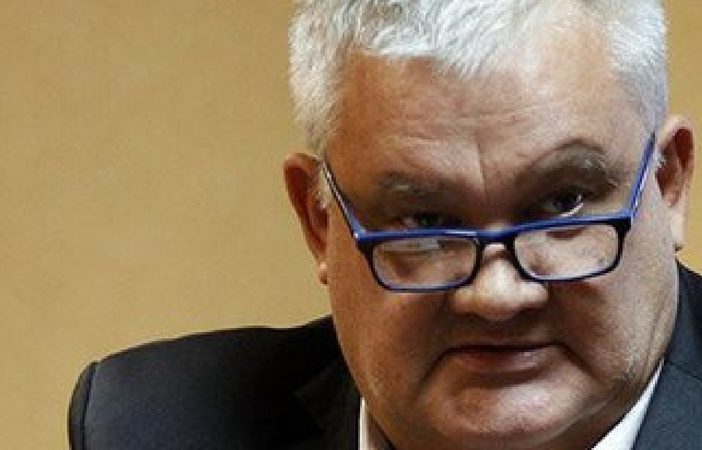Opinion
“Collapse of municipalities was inevitable”
As Eskom’s announced level 2 loadshedding increased to level 4 on Wednesday, 2 September, independent energy expert Ted Blom shares his thoughts on the latest round of power outages, tariff structures, the impending price increase of electricity, municipalities’ lack of control and the silence/inaction on the IRP.
Continued loadshedding
The current round of loadshedding is merely a continuation of the lack of proper maintenance that was initiated with the advent of the Soccer World Cup in 2010. To maximise the availability of gensets, Eskom ceased all preventative maintenance but neglected to reinstate it until 2014.
This could have been part of a massive fraud to pump up profitability, and hence executive bonuses during the period. Despite promises to catch up within 24 months, Eskom has never really caught up, and the maintenance that was conducted was grossly deficient in scope and quality, whilst prices appeared grossly inflated.
New executive leadership at Eskom have again developed lofty goals of refurbishing and reconditioning over 80 gensets in 12 months without extra budgets, by engaging OEM suppliers to replace “pirate parts” and hopefully expecting them to re-instate warranties.
This must be the biggest pipedream in the history of Eskom and just exposes the lack of engineering depth at Eskom. In reality, Eskom is now so broken that it cannot even supply proper baseload to all customers, let alone meet the daily peak demands without using the emergency diesel OCGTs that are the most expensive option for the utility.
This view is confirmed by the CSIR who are predicting more than five times the loadshedding experienced in 2019 per year for at least the next three years. I concur with their view although my estimates were slightly more conservative.
Tariff structure
Tariff structures in South Africa have become a nightmare and entangled. There are over 900 tariffs in this country. Each of the nearly 200 municipalities has its own tariff structure, which largely tries to mimic Eskom’s structure which in itself is a nightmare.
The tariffs are based on several factors such as:-
- Type of supplier (Eskom direct or municipality)
- Size of the installation
- Single-phase vs 3-phase
- Distance from the Mpumalanga power stations,
- Peak-time vs standard vs offpeak, time of day tariffs
- Urban vs rural tariffs
- Seasonal surcharges
- Line rentals
- Admin charges
- Maximum demand penalties
- Bulk tariffs
- Special (subsidised) tariffs
A proper review and simplification of the tariffs is long overdue and has been raised as prejudicial to certain users at many NERSA (THE National Energy Regulator of SA) public hearings, but unfortunately, the regulator does NOT see this as their domain – they merely follow regulations.
The shifting of the Energy Portfolio between Ministries did not enhance Energy Policy development, and there seems to be a massive vacuum in addressing tariff anomalies, which in turn is prejudicial to new Investment.
On top of the above mess, there has also been systematic ignorance or non-compliance by NERSA, National Treasury and COGTA, of the prescripts of the Constitution, which dictates that tariff increases should NOT be higher than Consumer Price Index (CPI).
This has resulted in tariff increases since 2007 running at over 500% – 700%, versus cumulative CPI over the period amounting to 79%.
The consequence of this dereliction of duty has been bankrupted municipalities and consumers who can no longer afford expensive electricity and a bloated utility, which through inflated tariffs has become inefficient and corrupted by Billions of Rands of wasteful and irregular expenditure.
If drastic corrective intervention to remedy bloated and irregular tariffs is not exercised soon, the whole reselling side of the electricity sector is at risk of collapsing, as consumers are no longer able to afford increases multiple times the CPI. Despite this obvious blunder, government appears bereft of understanding the impact of non-compliance with proper economic sense.
Failing municipalities
We have investigated the reason for failing municipalities and believe that despite widespread corruption and nepotism in employment practices, as well as gross mismanagement, the municipalities were nevertheless destined to fail because of incompetent oversight by National Treasury, COGTA, and councillors who were all ill-equipped to fulfil the functions delegated by the Constitution.
A review of two of the major costs of any municipality reveals runaway increases in the procurement of water and electricity, which should have been blocked by the oversight institutions, are mostly responsible for the failure and insolvency of municipalities, rendering them unable to deliver other services to their constituents.
The Constitution is VERY clear (when reading it with the regulations that accompany it) that these major input costs MUST be capped at CPI.
NERSA is also guilty of transgressing the constitutional prescripts when it came to affording Eskom above CPI increases. Water Board increases are not subject to a Regulator and have also been allowed to run rogue since 2007, mainly due to corruption and wasteful expenditure, which has NOT yet been properly investigated by Parliament.
Accordingly, the collapse of the municipalities under the pressure of runaway electricity and water increases was inevitable and clearly points to grossly inadequate governance by those appointed to oversee these issues.
Author: Ted Blom
About the author: Ted is a Partner at Mining & Energy Advisors and is a regular contributor to ESI Africa, and panellist and speaker at African Utility Week & POWERGEN Africa.
This article was originally published on ESI Africa and is republished with permission with minor editorial changes.
Disclaimer: The articles expressed in this publication are those of the authors. They do not purport to reflect the opinions or views of Green Building Africa, our staff or our advertisers. The designations employed in this publication and the presentation of material therein do not imply the expression of any opinion whatsoever on the part Green Building Africa concerning the legal status of any country, area or territory or of its authorities.















